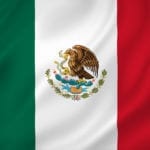
Consumer packaged goods (CPG) are industry terms for goods that customers use up and replace on a regular basis. Food, beverages, cosmetics, and cleaning products are all examples of consumer packaged goods. CPG can be contrasted with durable goods (DGs), an industry term for merchandise that is not consumed or destroyed in use and is generally not replaced until the merchandise develops a problem. Appliances, furniture, and automobiles are some examples of durable goods.
How much has the covid-19 pandemic affected the CPG industry? Find out more in this article
The Pandemic Was a Game-Changer for CPG
The COVID-19 pandemic has thrown markets into disarray and dramatically altered consumer behavior. Few industries have remained unaffected by these profound changes. Consumer packaged goods (CPG) was no exception.
Following a modest 1.8 percent compound annual growth rate from 2016 to 2019, the industry grew by an impressive 10.4 percent last year. Revenue increased by 7.5 percent and 9.5 percent for large and midsize businesses, respectively. Small businesses outperformed with 15.4 percent revenue growth, while extra-small businesses outperformed with an 18.3 percent revenue increase across the board. Private-label brands grew by 11.9 percent and gained market share, though at a slower rate than in previous years.
Volume was a significant driver of CPG growth.
Volume grew by 6.4 percent in 2020, surpassing price/mix for the first time in more than ten years. (Price/mix is a statistic that determines a change in the absolute price based on like-for-like pricing and product mix.) Price/mix increased by 3.7 percent, the most in a decade.
The biggest jumps in volume came in March 2020, when shoppers raced to the physical and digital stores and braced for lockdowns.
In a recent CBA/Ipsos poll, nearly half of respondents indicated they intended to keep toilet paper (46 percent) and shelf-stable food (45 percent) on hand in the event of a pandemic.
New Leading CPG Companies Have Emerged
There were no new entrants in the top-ten lists of small and midsize businesses in 2019, and only one newcomer joined the list of large leaders.
The 2020 study, on the other hand, tells a different story. While many large and midsize companies have returned leaders from previous years, 60 percent of the small leaderboard is made up of new entrants who may be able to meet pandemic-specific demands.
This year’s list of large growth leaders was topped by Grupo Bimbo, followed by General Mills, Mondelez, and Conagra Brands. Ready-to-eat foods (including bakery goods, frozen meals, and candy), cleaning supplies, paper products, and home-care items were the most appealing categories.
New Consumer Habits that are Unlikely to Change.
CPG merchandise was typically sold in brick-and-mortar stores by retailers. Because of the pandemic, consumers’ habits have shifted. Until recently, manufacturers found it difficult to take advantage of the Internet and sell CPG through e-commerce channels.
According to a recent survey, 47% of consumers have used online ordering for delivery or click-and-collect pickup, and more than three-quarters of online buyers plan to use these direct-to-consumer services after the epidemic is over.
Finally, COVID-19 is transforming not only how people browse for items, but also how they eat. After discovering or rediscovering the activity during quarantine, seven out of ten consumers say they expect to continue cooking at home after the pandemic.
Are you aware of the current situation, especially when it comes to import/export regulations to the USA and Mexico?
Talk to the experts in the department of transportation & customer service!


